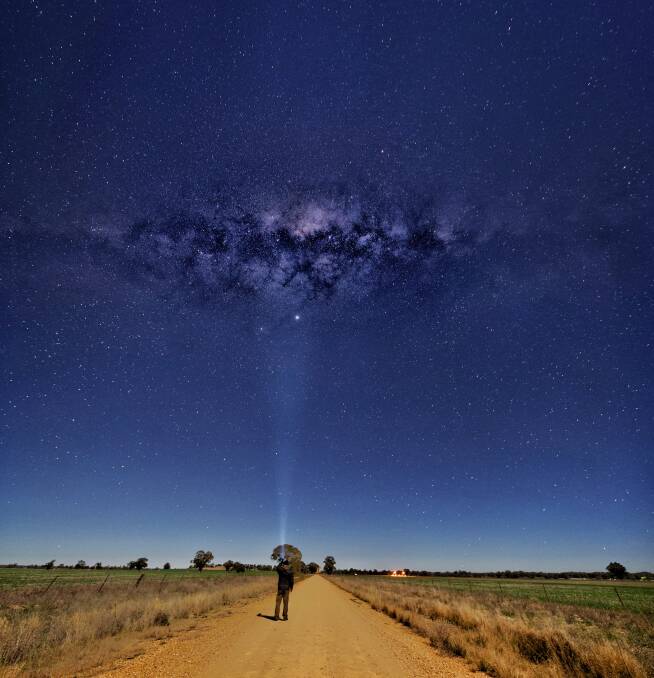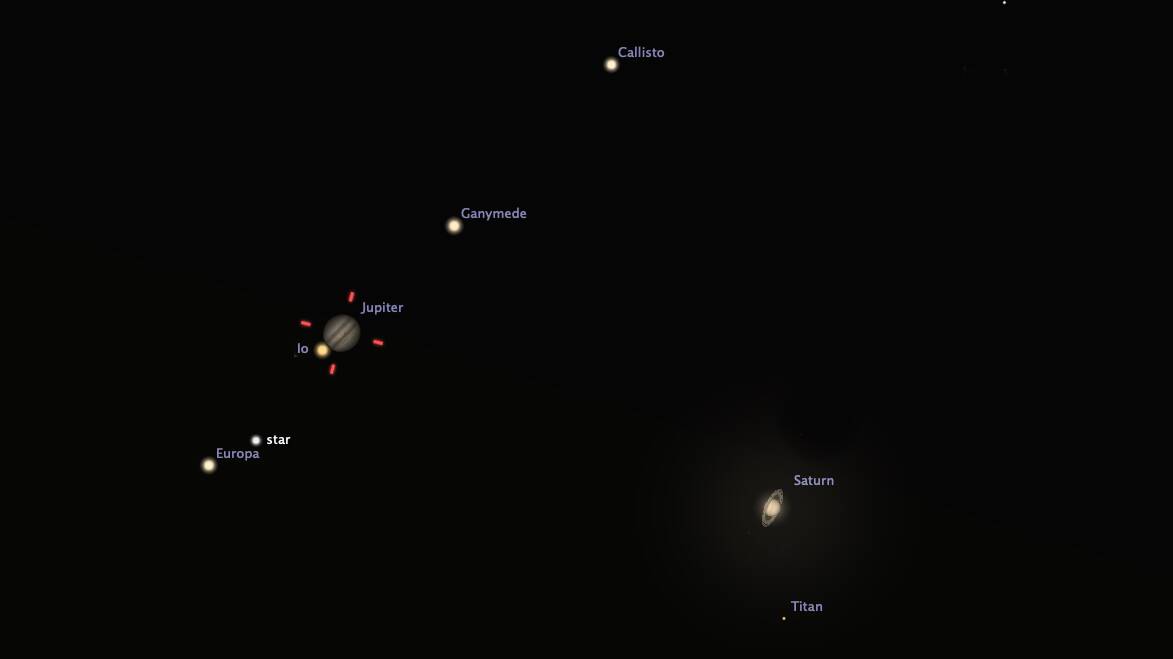
No doubt Parkes and the Central West are among the best places for us to observe the skies and enjoy all its spectacular displays.
Subscribe now for unlimited access.
$0/
(min cost $0)
or signup to continue reading
A great example is the stars at night, where former Parkes man and keen photographer Michael Samson has kindly shared with us his recent photo taken of the stars above Parkes.
For those who love seeing our night skies put on a show, there is also going to be a great and rare conjunction of the planets Jupiter and Saturn that will occur on Monday night.
Thanks to our good friends at the CSIRO Parkes Radio Telescope, operations scientist John Sarkissian OAM has shared with us some information about this conjunction.
A conjunction occurs when the planets appear very close together, on the sky. They are really millions of kilometres apart, but because they are in almost the same line-of-sight, they appear close together.
About midnight (24:00 hours) on Monday, December 21, Jupiter and Saturn will be only 0.1 degrees apart. That's less than the diameter of the Moon.
"Unfortunately, from the Central West the pair will set a few hours earlier around 10pm (AEDT), so we won't see them at their extreme closest," Mr Sarkissian said.
"But if you observe them around 9pm (AEDT) they will still appear very close together, about 15 degrees above the western horizon.
"They should appear in the same field-of-view of telescopes and binoculars. Jupiter will be the brighter of the two planets, by far."
Through telescopes, Mr Sarkissian said, you will see Jupiter with its four big moons, alongside Saturn with its rings and large moon.
"It will be a fantastic sight. Even though their closest approach occurs at midnight, you will still see them very close together in the early evening, after dark," he said.
"Look toward the western sky, about 15 degrees above the western horizon. Be sure you have a clear view, free of trees and buildings.
"Over the next few days, you will see the two slowly approaching each other, then moving apart. So, if it's overcast on Monday, you can still see them close, a few days either side.
"15 degrees is about one and a half palm widths at arm's length, projected onto the sky."

Great conjunctions of Jupiter and Saturn occur every 19.85 years, but they don't always get this close. The 2020 great conjunction of Jupiter and Saturn will be the closest since 1623 AD and the closest observable since 1226 AD.
"This year's Jupiter-Saturn conjunction won't be matched again until the Jupiter-Saturn conjunction of March 15, 2080. So, be sure to catch it while you can," Mr Sarkissian said.
Something to also note is the summer solstice, the longest day of the year, will occur earlier that evening (Monday) around 8pm (AEDT).
READ ALSO:

